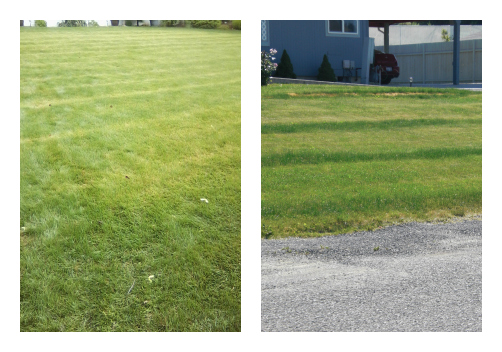Have you ever wondered how to calibrate your drop spreader? It’s important to have your lawn fertilizer spreader adjusted to apply products at the recommended rate – ensuring a uniform and effective application that is cost-effective, good for your lawn and eco-friendly.
Drop spreaders are very precise and perfect for fertilizing small lawns. They are also easy to calibrate. Here’s how to do it in a few simple steps:
Tip: Every granular product is different, so you will need to calibrate your spreader every time you use a new product.
Fertilizer becomes a pollutant when it is misapplied or over-applied. Take care to use fertilizers according to their labels and instructions. Proper rate and timing are important as well as basing lawn nutrient requirements on a reliable soil test. Protect our water sources! Avoid getting fertilizer on sidewalks, driveways and roads where it can wash into storm drains – and then into streams, lakes and rivers.
Determining How Much Fertilizer You Will Need
- Have your soil tested and/or consult with your local cooperative extension to determine your lawn’s fertilizer rates.
- Measure the square foot area of your lawn (length x width = square feet)
- Calculate how much fertilizer you need to spread on your lawn.
Here’s an example: You want to apply 0.75 LB N/1000 ft2 to your 5,000 ft2 lawn. You have purchased a 20lb bag of fertilizer with an analysis of 25-5-10 (which is 25% actual nitrogen by weight). Your drop spreader is 2 ft wide. Use this equation (or the calculator below) to calculate how much product to apply:
![]()
0.75 ÷ 0.25 = 3lb of fertilizer per 1000 ft2
Thus, you need to spread 15 pounds of 25-5-10 fertilizer on your 5,000 ft2 lawn.
Tip: Have you ever seen a lawn with light and dark streaks? This is caused by uneven fertilizer spreading. Avoid this by making your applications in two directions – at 90 degrees to each other – to obtain a uniform application. Therefore, you will need to calibrate your spreader to apply half of your target rate – 1.5 lb N per 1000 ft2.

Adjust The Setting on Your Spreader
You will need:
- A scale
- Tape measure
- Marking flags or turf paint to mark test areas
Tip: Several lawn fertilizer products have a chart on the bag label with settings for the most popular drop spreader brands. Start with these settings.
Tip: Always fill your spreader on a hard, level surface. This makes spills easy to clean up and reduces the chance of burn spots in your lawn.
There are two methods you can use to measure the amount of material your spreader is applying.
Starting with the simplest:
- Measure and mark a 1000 ft2 (50′ x 20′) area in your lawn.
- Open your spreader to the recommended setting – or start at the half-open mark.
- Load your spreader with the amount of product you need to cover 1000 ft2 (1.5 lb for this example).
- Test the setting by spreading the product over your 1000 ft2 area.
- Make small adjustments and re-test until you are applying the correct rate.
The second method is more accurate. However, it requires a catch pan. Some drop-type spreaders come with a pan you can place under the hopper to catch material while calibrating. If yours does not, you will need to make one – cardboard works well.
- Measure and mark 100 ft2 – since the spreader in this example is 2 feet wide, you would measure a distance of 50 feet.
- Fill your spreader half-full of product.
- Run the spreader over the measured distance, collecting the product in your catch pan.
- Weigh the collected material and multiply by 10 to get the amount that would be applied over 1000 ft2.
- Make adjustments and re-test until you are applying the correct rate.
No calibrating, no guessing, simple and easy to use
Have you heard about the Sunday Smart Lawn Plan? It’s simple, do-it-yourself natural lawn care that’s customized to your soil, climate, and lawn. Delivered to you right when you need it.
Sunday’s plant and soil nutrient products are made from food waste, seaweed, and molasses. The natural additives stimulate plant growth and activate soil life.
Eliminate fertilizer misapplications. This is Super Environmentally Friendly lawn care!
You might like these lawn tool tips
Lawn Aerators | Comparing Spike & Core Aerators
Comparing Spike & Core Lawn Aerators. How to choose the best aerator, the benefits that each type brings, make an informed decision. Lawn care tips and advice.
How To Install Drip Irrigation Using a Simple Pop-Up Conversion Kit
DIY sprinkler head to drip irrigation system conversion. How to simply convert a pop-up sprinkler system into drip using a conversion kit.
How to Winterize a Sprinkler System | Do It Yourself Irrigation
How to winterize a sprinkler system using the ‘blow out’ method. Helpful DIY lawn care tips and advice for planting and growing grass.
